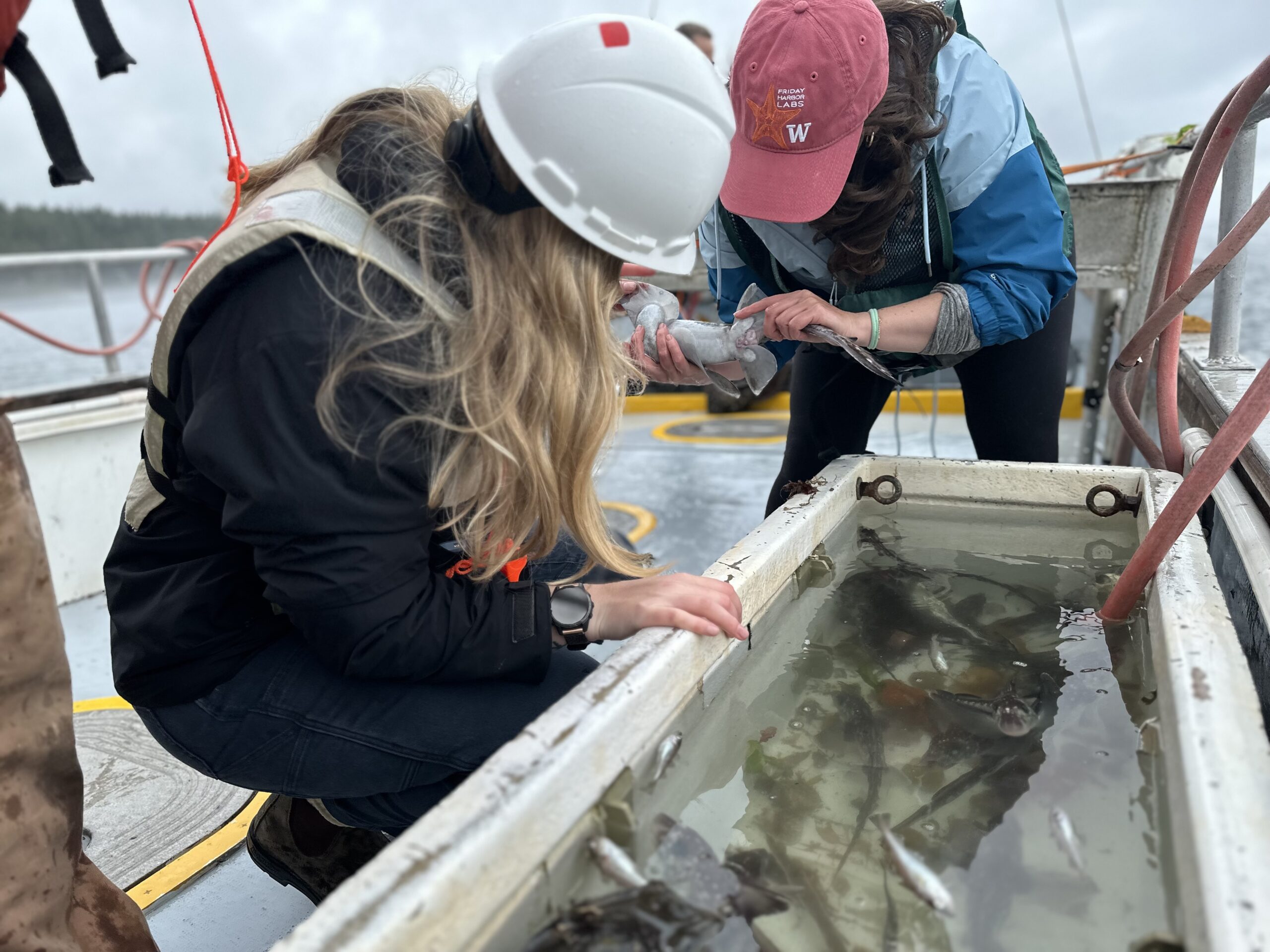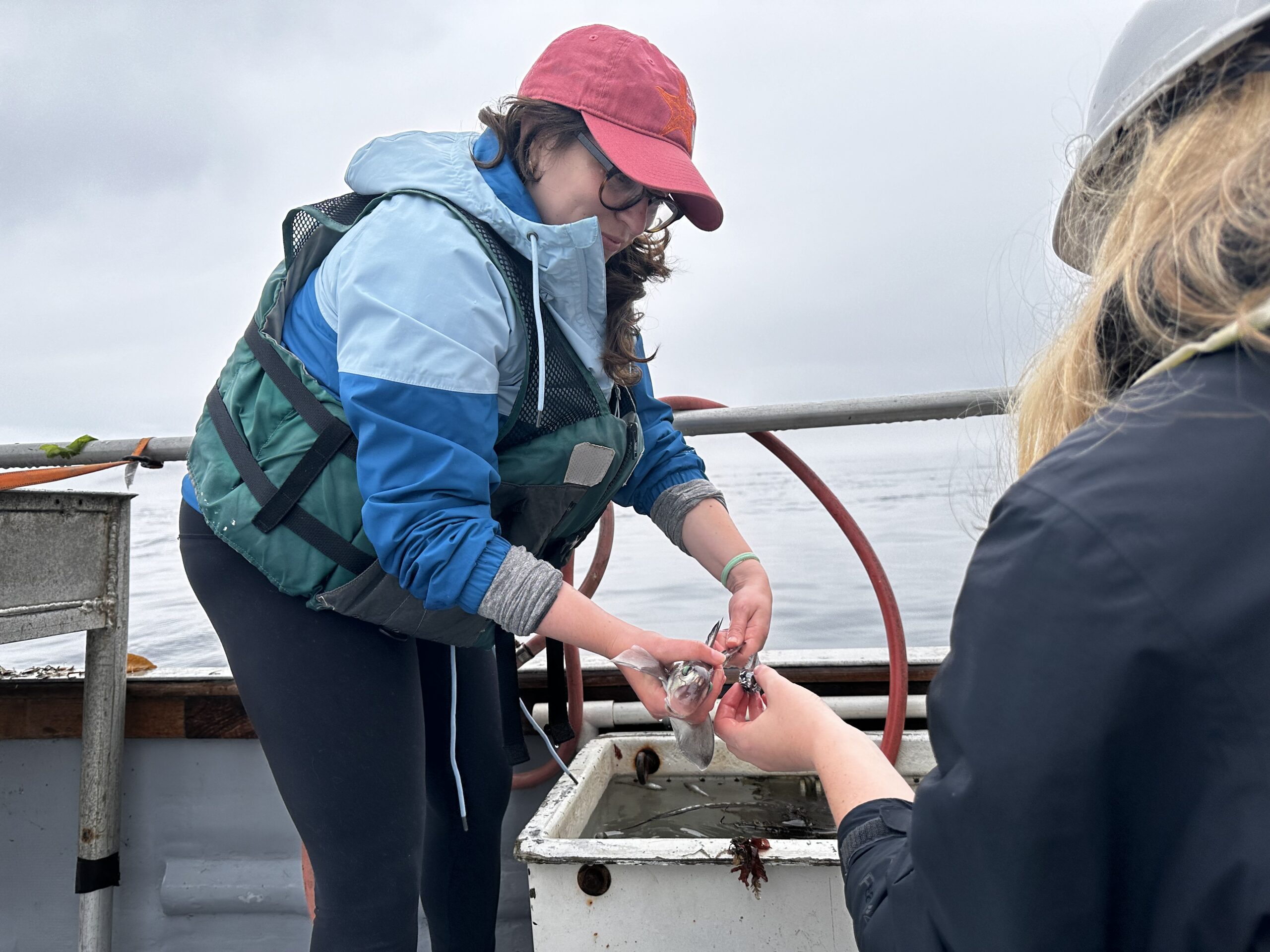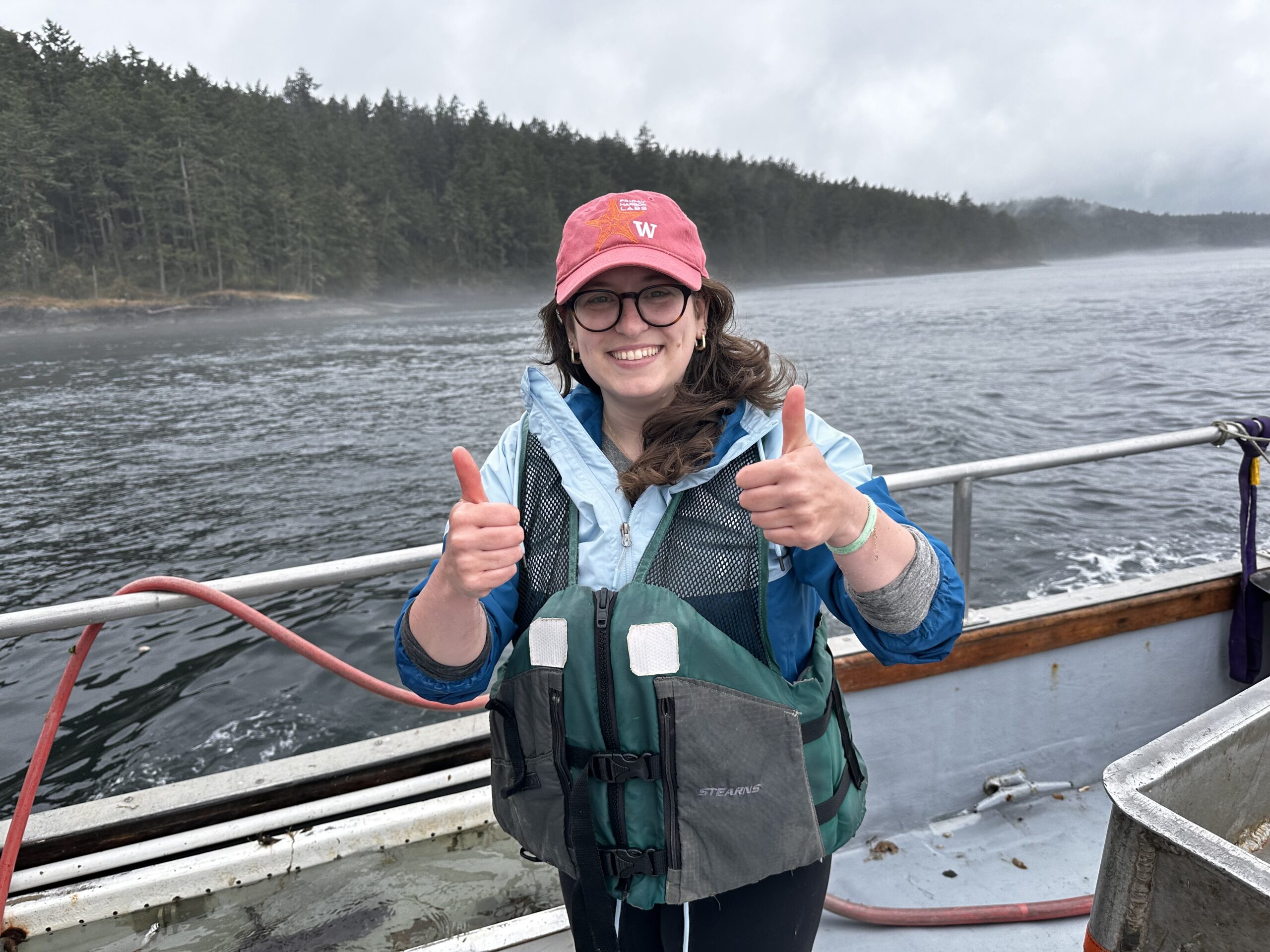Discovering the Hidden Life of the Pacific Spotted Ratfish: A Journey into Washington’s Marine Ecosystems
Hi, my name is Karly, and I’m a postdoctoral research fellow at Friday Harbor Laboratories (FHL) in Friday Harbor, WA. FHL is a marine station, part of the University of Washington, located on the San Juan Islands—80 miles north of Seattle. These islands were shaped by glaciers retreating about 13,000 years ago, leaving behind rugged shorelines and deep channels that foster an abundant marine life.
I research the tools organisms use to interact with their environments and how these tools evolved over time. One of the most intriguing tools in the marine world is denticles—small, tooth-like structures found on the skin of sharks. These denticles reduce drag during swimming, provide protection against parasites, and have an incredible evolutionary story that spans 500 million years.
Denticles and teeth alike, tell a story of adaptation and survival, revealing how these animals have interacted with their environment for millions of years. One such shark-relative we’re lucky to have here in Washington is the Pacific Spotted Ratfish Hydrolagus colliei. With one of the highest biomasses in the state’s waters, ratfish play a crucial role in the energy flow of our marine ecosystems.

Here I am (in the red hat) demonstrating to Megan Vandenberg, one of the crewmates aboard our research vessel, the notable features of a female ratfish showing signs of recent mating. We are surveying the waters around the San Juan Islands in search of potential nursery grounds. Photo © Karly Cohen
Ratfish have some of the most bizarre dentition and body features among chondrichthyans (cartilaginous fish). Their teeth are fused into a beak-like structure, and they possess a strange, knobby tenaculum on their face along with a large dorsal spine. Their evolutionary and developmental origins are a mystery, which is where my research comes in. My goal is to study these fish from their earliest stages of life—but first, we need to find their nursery grounds.
Sharks, including ratfish, have breeding grounds that are notoriously hard to identify. Many sharks are large, highly mobile, and live in the deep ocean, making their breeding habits difficult to observe. Fortunately, the Pacific Spotted Ratfish ventures into shallower waters to lay eggs. Over the past six years of trawling across the San Juan Islands, I’ve built up a historical database tracking seasonal changes in ratfish populations. We’ve also come across egg cases along our trawling routes, giving us clues about where these elusive nursery grounds might be.
That’s where my work with the Save Our Seas Foundation comes in. The aim of this project is to locate potential nursery sites for the Pacific Ratfish. Using trawling data, GIS mapping, and ROV (remotely operated vehicle) technology, we’re narrowing down specific locations in the San Juan Islands where ratfish might be laying their eggs.

After pulling in several hatchling ratfish and empty egg cases from the trawl, we are comparing the size of a hatchling (in my hand) to the egg case (held by Megan Vandenberg). This comparison helps us better understand the growth stages and development of ratfish, contributing to our ongoing research on their reproductive ecology. Photo © Karly Cohen
While working as a postdoc earlier this year at California State University Fullerton, I welcomed a very special addition to my research team—I had a baby in the spring! Becoming a mom has been an exciting and rewarding challenge. Balancing motherhood and research means my schedule has to be flexible, often requiring evening and weekend hours. I love every minute I spend on this project and is what keeps me going collecting data, despite the challenges of being a new mom. Having a newborn made long trawling trips logistically challenging, so I shifted my focus into historical texts, some dating back to the 1820s, to uncover clues about ratfish populations. I also interviewed local fishermen and divers along Washington’s coast, learning about their sightings of ratfish and egg cases. From this, I’ve been able to identify three potential hotspots in the state that could be crucial breeding and nursery grounds for the species.
Understanding where these unique sharks breed is not only fascinating but vital for conservation. By protecting these breeding grounds, we can help maintain the health and balance of our marine ecosystems. Stay tuned for more updates on our discoveries—there’s much more to come!
Until next time,
Karly

Excited to be out on the water fishing and searching for potential nursery sites for ratfish in the beautiful San Juan Islands. Fieldwork days like this are always an adventure! Photo © Karly Cohen
